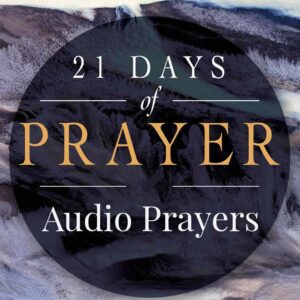Blended, Biblical, Beautiful Worship
All my life, worship services have seemed basically the same. Of course, some of the stylistic elements have changed. Hymnbooks have been replaced with the words for modern songs on a screen. Organs have almost disappeared. Keyboards and guitars have taken center stage. Overhead projectors are now ancient and Pro Presenter images, punctuated with video clips, are common. Pews have been replaced with theater chairs. Large wood pulpits have given way to smaller stands – or no podium at all. Florescent lights are gone, while computerized laser lights and environmental smoke have become vogue.
In spite of all these changes, not much has really changed in the elements of the vast majority of worship services. What do I mean? The essential components are the same, usually in the same order: singing, then preaching, with occasional prayer and announcements sprinkled in. The service is neatly segmented between worship in music and worship in the word. Prayer is typically a seasoning on the meat and potatoes of the gathering.
Why So Segmented?
Who says it has to be this way? Why must we segment and subdivide the services into these distinct compartments? Here is a radical, maybe not so crazy, proposal that might change how we worship on Sundays.
Instead of 20 minutes of music followed by 40 minutes of preaching, zipped up neatly with an opening and closing prayer, imagine if the service looked more like this:
- Worship in song – 8 minutes
- First preaching segment – 12 minutes
- Praying together about what we have just heard – 5 minutes
- Short song of worship – 3 minutes
- Second teaching segment – 15 minutes
- Praying together about what we have just heard – 5 minutes
- Short worship song – 3 minutes
- Third teaching segment – 10 minutes
- Praying together about what we have just heard – 5 minutes
- Worship & response – 7 minutes
- Worship through giving / ministry announcements – 5 minutes
- Final worship – 3 minutes
Objections?
One immediate objection some may raise is that shorter teaching segments represent some kind of compromise of the word. Of course, the Scripture is clear that we must accurately teach and passionately preach God’s inspired word. However, the Bible attaches no time requirements related to the delivery of the message. In fact, if you read and timed some of the sermons of the New Testament, you would find that they are shorter and more effective than most sermons in our churches today (Acts 2:4-41, 4:8-12; 7:2-53). An exception might be Paul’s teaching on the Lord’s Day in Troas when he spoke late into the night and Eutychus dozed off, and then fell from the upstairs window (Acts 20:7-12). The point remains that effective preaching is not necessarily attached to a certain timeframe.
Benefits of Integration
I see several benefits to this kind of approach:
Attention – Like it or not, the attention span of Americans is getting shorter. Research is even showing that with all of the technological multitasking we practice via smartphones, iPads, and email, our brains are actually being remapped, making activities that require extended focus more difficult. I don’t necessarily like this and believe it has ramifications on our spiritual health. But, it is what it is.
Shorter components, punctuated with prayerful application and worship, might encourage better focus and engagement. That is a noble goal for every gathering. I remember attending a church where the sermons were typically 55 to 65 minutes. Few people could even remember what was said at the beginning of the sermon after 50 minutes had elapsed. I noticed a lot of dozing going on, even amid the attempt to take notes. Content overload might lead to a full head, but not necessarily an engaged will.
Interaction – We have become a spectator culture when it comes to worship. Even when we sing we give our attention to the performers on the platform. We passively listen to extended messages with very little crowd participation.
Taking time to pray and worship in connection with shorter segments of teaching and response causes our minds and hearts to engage in the power of God’s word. Contextually appropriate expressions of prayer give attendees the opportunity to connect with one another at a meaningful level. This could include private prayer, small group prayer, prayer led from the front, and other formats.
Application – Recently, the senior pastor at a church I am working with commented, “I’ve become convinced that the most powerful way to apply God’s word is to pray it.” I agree. Even the opportunity to sing thematically related songs in connection with a teaching segment can become a uniting and inspiring way to engage with the truth as a worshiping community.
The goal of our teaching is to engage the mind and heart in order to affect the will. This leads to a deeper application and obedience. The goal of our singing is to employ the entire being in extolling the character of God with a keen awareness of His presence. Substantive prayer, woven into the service, enhances all of these goals.
Spirit and Truth
In John 4:24 Jesus gave the landmark statement on worship, declaring that the Father is seeking those who will worship Him “in spirit and in truth.” His words remind us that we should pursue a balance of heart and mind, interaction and information, commitment and content. Perhaps a more intentional and interactive integration of both elements would produce an experience that would aid our journey toward Christlikeness and mission engagement.
Holy Dissatisfaction
Admittedly, a change of this sort might “upset the apple cart.” Candidly, many believers want a predictable, comfortable, and heady experience. It is very likely that a more interactive experience would be threatening to some who are completely satisfied with the status quo. However, the boldness to try something more engaging might be worth the experiment. Who knows, maybe a different approach would produce a different result. A different result might shape a different kind of disciple, leading to a different kind of impact on the world that so desperately needs to encounter passionate, pure, and powerful believers walking in the light of the Gospel of Jesus Christ.
Copyright © 2015 Daniel Henderson. All rights reserved.


